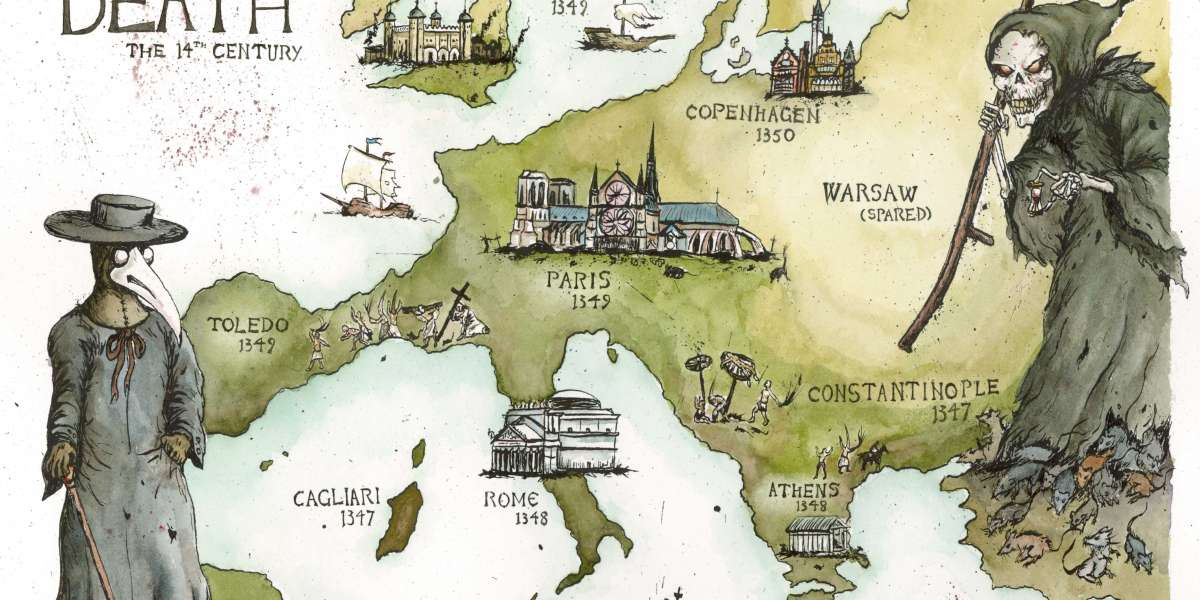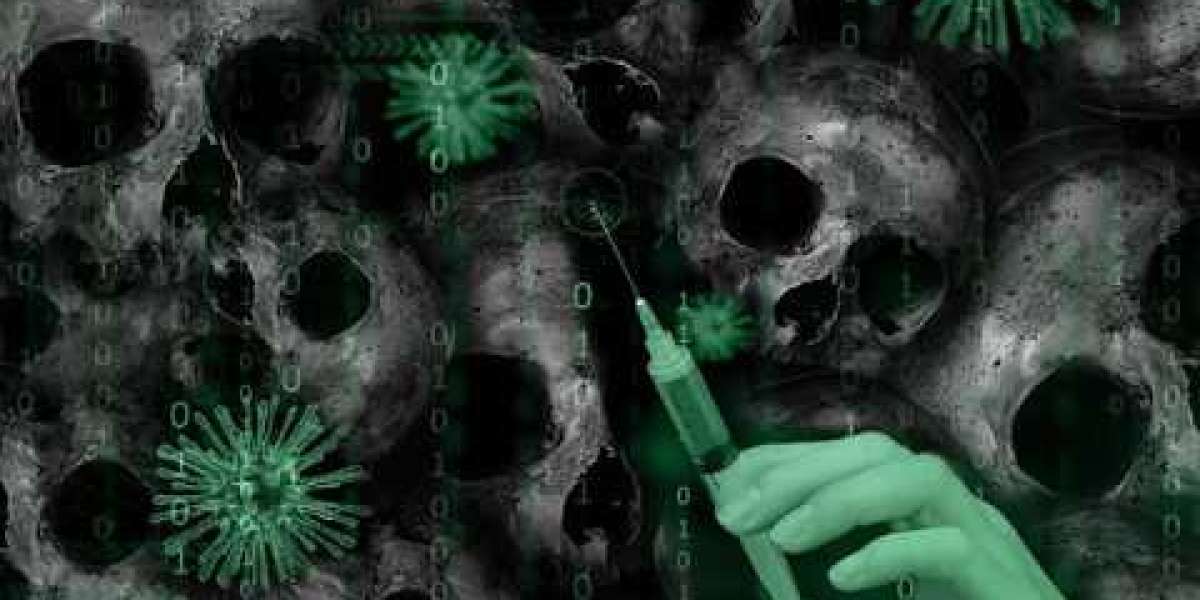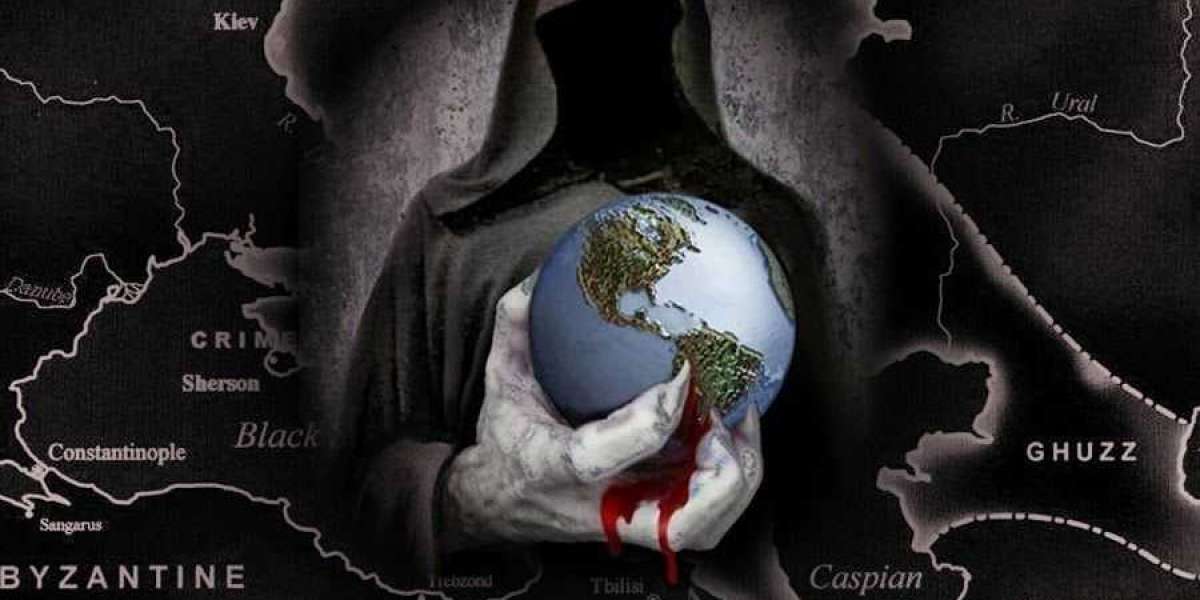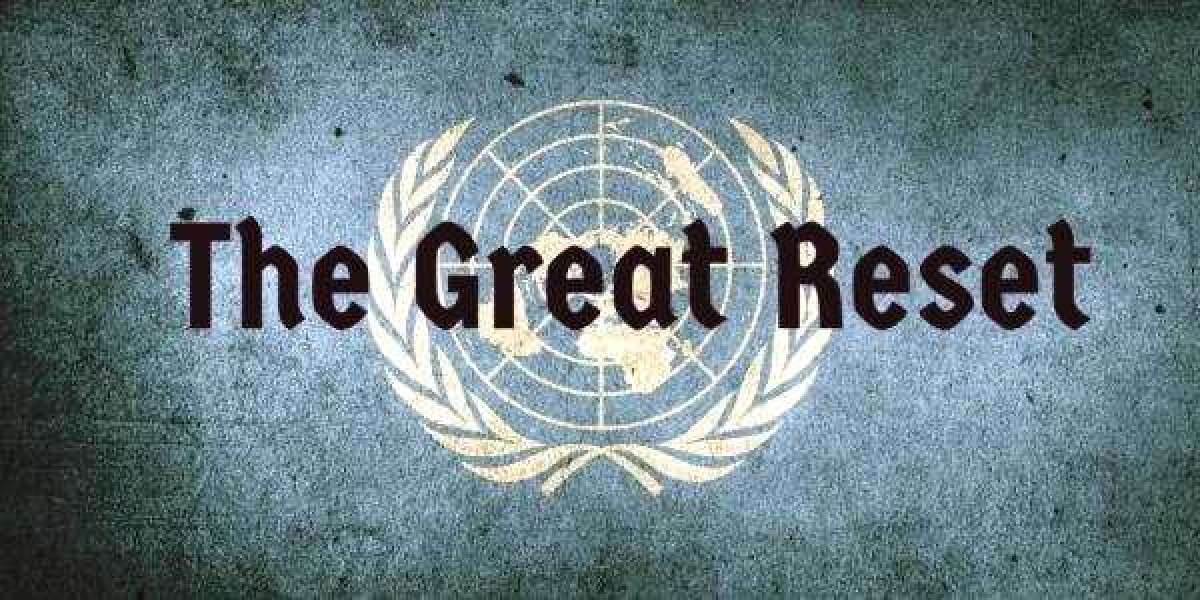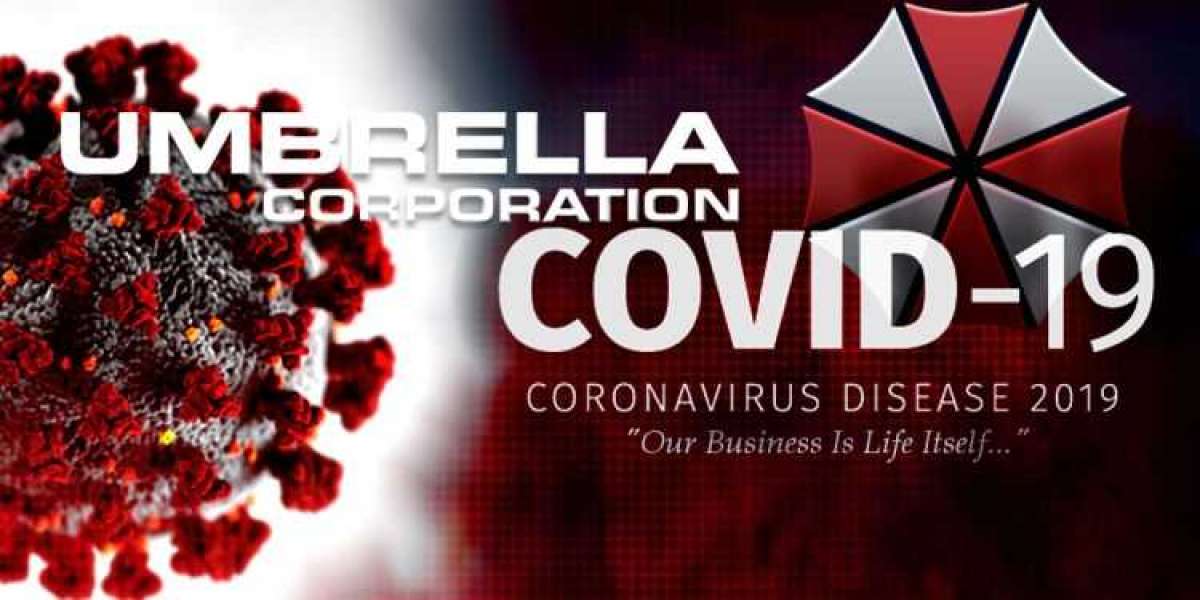Artificial Disease, we've seen it before
'The Black Death' is an example
- and a very telling one ...
Longread
"The Black Death" by William Bramley
Chapter 18 from "The Gods of Eden"
[Scanned Pages] p. 179-195
AVON BOOKS Copyright©1989
ISBN: 0-380-71807-3
*
The Black Death began in Asia and soon spread to Europe
where it killed well over 25 million people (about one third
of Europe's total population) in less than four years. Some
historians put the casualty figure closer to 35 to 40 million
people, or about half of all Europeans.
The epidemic first spread through Europe between 1347
and 1350. The Bubonic Plague continued to strike Europe
with decreasing fatality every ten to twenty years in shortlived
outbreaks all the way up until the 1700's. Although it
is difficult to calculate the total number of deaths from that
400-year period, it is believed that over 100 million people
may have died from the Plague.
Two types of plague are believed to have caused the Black
Death. The first is the "bubonic" type, which was the most
common. The bubonic form of plague is characterized by
swellings of the lymph nodes; the swellings are called
"buboes." The buboes are accompanied by vomiting, fever,
and death within several days if not treated. This form of
plague is not contagious between human beings: it requires
an active carrier, such as a flea. For this reason, many historians
believe that flea-infested rodents caused the Bubonic Plague.
Rodents are known to carry the disease even today.
A number of records from between 1347 and the late 1600's
speak of rodent infestations prior to several outbreaks of the
Black Death, lending credence to the rodent theory.
The second form of plague contributing to the Black
Death is a highly contagious type known as "pneumonic"
plague. It is marked by shivering, rapid breathing, and the
coughing up of blood. Body temperatures are high and death
normally follows three to four days after the disease has been
contracted. This second type of plague is nearly always fatal
and transmits best in cold weather and in poor ventilation.
Some physicians today believe it was this second form, the
"pneumonic" plague, which was responsible for most of the
casualties of the Black Death because of the crowding and
poor hygienic conditions then prevalent in Europe.
We would normally shake our heads at this tragic period
of human history and be thankful that modern medicine
has developed cures for these dread diseases. However,
troubling enigmas about the Black Death still linger.
Many outbreaks occurred in summer during warm weather
in uncrowded regions. Not all outbreaks of bubonic plague
were preceded by rodent infestation; in fact, only a minority
of cases seemed to be related to an increase in the presence
of vermin. The greatest puzzle about the Black Death is how
it was able to strike isolated human populations which had
no contact with earlier infected areas. The epidemics also
tended to end abruptly.
To solve these puzzles, an historian would normally look
to records from the Plague years to see what people were
reporting. When he does so, he encounters stories so stunning
and unbelievable that he is likely to reject them as
the fantasies and superstitions of badly frightened minds.
A great many people throughout Europe and other Plaguestricken
regions of the world were reporting that outbreaks
of the Plague were caused by foul-smelling "mists." Those
mists frequently appeared after unusually bright lights in the
sky. The historian quickly discovers that "mists" and bright
lights were reported far more frequently and in many more
locations than were rodent infestations. The Plague years
were, in fact, a period of heavy UFO activity.
What; then, were the mysterious mists?
There is another very important way in which plague
germs can be transmitted: through germ weapons. The United
States and the Soviet Union today have stockpiles of
biological weapons containing bubonic plague and other
epidemic diseases. The germs are kept alive in cannisters
which spray the diseases into the air on thick, often visible,
artificial mists. Anyone breathing in the mist will inhale
the disease. There are enough such germ weapons today
to wipe out a good portion of humanity. Reports of identical
disease-inducing mists from the Plague years strongly
suggest that the Black Death was caused by germ warfare.
Let us take a look at the incredible reports which lead to
that conclusion.
The first outbreak of the Plague in Europe followed an
unusual series of events. Between 1298 and 1314, seven
large "comets" were seen over Europe; one was of "aweinspiring
blackness." One year before the first outbreak of
the epidemic in Europe, a "column of fire" was reported over
the Pope's* palace at Avignon, France. Earlier that year, a
"ball of fire" was observed over Paris; it reportedly remained
visible to observers for some time. To the people of Europe,
these sightings were considered omens of the Plague which
soon followed.
It is true that some reported "comets" were probably
just that: comets. Some may also have been small meteors
or fireballs (large blazing meteors). Centuries ago, people
were generally far more superstitious than they are today
and so natural meteors and similar prosaic phenomena were
often reported as precursors to later disasters even though
there was no real-life connection. On the other hand, it
is important to note that almost any unusual object in
the sky was called a "comet." A good example is found
in a bestselling book published in 1557: A Chronicle of
Prodigies and Portents . . . by Conrad Lycosthenes. *
On page 494 of Lycosthenes' book we read of a "comet"
observed in the year 1479:
"A comet was seen in Arabia
in the manner of a sharply pointed wooden beam ..." The
accompanying illustration, which was based on eyewitness
descriptions, shows what clearly looks like the front half
of a rocketship among some clouds. The object appears
to have many portholes. Today we would call the object a
UFO, not a comet. This leads us to wonder how many other
ancient "comets" were actually similar rocketlike objects.
When we are confronted with-an old report of a comet,
we therefore do not really know what kind of thing we
are dealing with unless there is a fuller description. A
report of a sudden increase in "comets" or similar celestial
phenomena may, in fact, mean an increase in UFO
activity.
-----------------------------------------------------------------------------
* This was a second unauthorized pope who assumed the title
as the result of a schism within the Catholic Church.
The complete title is, "A chronicle of prodigies and portents that have
occurred beyond the right order, operation and working of nature, in
both the upper and lower regions of the earth, from the beginning of
the world up to these present times."
-----------------------------------------------------------------------------
The link between unusual aerial phenomena and the Black
Death was established immediately during the first outbreaks
of the Plague in Asia. As one historian tells us:
The first reports [of the Plague] came out of the
East. They were confused, exaggerated, frightening,
as reports from that quarter of the world so often are:
descriptions of storms and earthquakes: of meteors
and comets trailing noxious gases that killed trees and
destroyed the fertility of the land...
The above passage indicates that strange flying objects
were doing more than just spreading disease: they were also
apparently spraying chemical or biological defoliants from
the air. The above passage echoes the ancient Mesopotamian
tablets which described defoliation of the landscape by
ancient Custodial "gods." Many human casualties from the
Black Death may have been caused by such defoliants.
The connection between aerial phenomena and plague had
begun centuries before the Black Death. We saw examples
in our earlier discussion of Justinian's Plague. We read
from another source about a large plague that had reportedly
broken out in the year 1117—almost 250 years before the
Black Death. That plague was also preceded by unusual
celestial phenomena:
In 1117, in January, a comet passed like a fiery army
from the North towards the Orient, the moon was
o'ercast blood-red in an eclipse, a year later a light
appeared more brilliant than the sun. This was followed
by great cold, famine, and plague, of which one-third
of humanity is said to have perished.
-------------------------------------------------------------------------------
I have seen no mention of this plague in any other history book. It may
have been a local plague which destroyed not a third of humanity, but
a third of the afflicted population.
-------------------------------------------------------------------------------
Once the medieval Black Death got started, noteworthy
aerial phenomena continued to accompany the dread epidemic.
Reports of many of these phenomena were assembled
by Johannes Nohl and published in his book, The Black
Death, A Chronicle of the Plague (1926). According to Mr.
Nohl, at least 26 "comets" were reported between 1500 and
1543. Fifteen or sixteen were seen between 1556 and 1597.
In the year 1618, eight or nine were observed. Mr. Nohl
emphasizes the connection which people perceived between
the "comets" and subsequent epidemics:
In the year 1606 a comet was seen, after which a
general plague traversed the world. In 1582 a comet
brought so violent a plague upon Majo, Prague,
Thuringia, the Netherlands, and other places that in
Thuringia it carried off 37,000 and in the Netherlands
46,415.
From Vienna, Austria, we get the following description of
an event which happened in 1568. Here we see a connection
between an outbreak of Plague and an object described in
a manner remarkably similar to a modern cigar or beamshaped
UFO:
When in sun and moonlight a beautiful rainbow and
a fiery beam were seen hovering above the church
of St. Stephanie, which was followed by a violent
epidemic in Austria, Swabia, Augsberg, Wuertemberg,
Nuremburg, and other places, carrying off human
beings and cattle.
Sightings of unusual aerial phenomena usually occurred
from several minutes to a year before an outbreak of Plague.
Where there was a gap between such a sighting and the
arrival of the Plague, a second phenomenon was sometimes
reported: the appearance of frightening humanlike figures
dressed in black. Those figures were often seen on the outskirts
of a town or village and their presence would signal the
outbreak of an epidemic almost immediately. A summary
written in 1682 tells of one such visit a century earlier:
In Brandenburg [in Germany] there appeared in 1559
horrible men, of whom at first fifteen and later on
twelve were seen. The foremost had beside their posteriors
little heads, the others fearful faces and long
scythes, with which they cut at the oats, so that the
swish could be heard at a great distance, but the oats
remained standing. When a quantity of people came
running out to see them, they went on with their
mowing.
The visit of the strange men to the oat fields was followed
immediately by a severe outbreak of the Plague in
Brandenburg.
This incident raises intriguing questions: who were the
mysterious figures? What were the long scythe-like instruments
they held that emitted a loud swishing sound? It
appears that the "scythes" may have been long instruments
designed to spray poison or germ-laden gas. This would
mean that the townspeople misinterpreted the movement
of the "scythes" as an attempt to cut oats when, in fact, the
movements were the act of spraying aerosols on the town.
Similar men dressed in black were reported in Hungary:
. . . in the year of Christ 1571 was seen at Cremnitz
in the mountain towns of Hungary on Ascension Day
in the evening to the great perturbation [disturbance]
of all, when on the Schuelersberg there appeared so
many black riders that the opinion was prevalent that
the Turks were making a secret raid, but who rapidly
disappeared again, and thereupon a raging plague
broke out in the neighborhood.
Strange men dressed in black, "demons," and other terrifying
figures were observed in other European communities.
The frightening creatures were often observed carrying long
"brooms," "scythes," or "swords" that were used to "sweep"
or "knock at" the doors of people's homes. The inhabitants
of those homes fell ill with plague afterwards. It is from these
reports that people created the popular image of "Death" as
a skeleton or demon carrying a scythe. The scythe came
to symbolize the act of Death mowing down people like
stalks of grain. In looking at this haunting image of death,
we may, in fact, be staring into the face of the UFO.
Of all the phenomena connected to the Black Death, by
far the most frequently reported were the strange, noxious
"mists." The vapors were often observed even when the
other phenomena were not. Mr. Nohl points out that moist
pestilential fogs were "a feature which preceded the epidemic
throughout its whole course." A great many physicians
of the time took it for granted that the strange mists caused
the Plague. This connection was established at the very
beginning of the Black Death, as Mr. Nohl tells us:
The origin of the plague lay in China, there it is said to
have commenced to rage already in the year 1333, after
a terrible mist emitting a fearful stench and infecting
the air.
Another account stresses that the Plague did not spread
from person to person, but was contracted by breathing the
deadly stinking air:
During the whole of the year 1382 there was no wind,
in consequence of which the air grew putrid, so that an
epidemic broke out, and the plague did not pass from
one man to another, but everyone who was killed by
it got it straight from the air.
Reports of deadly "mists" and "pestilential fogs" came
from all Plague-infested parts of the world:
A Prague chronicle describes the epidemic in China,
India and Persia; and the Florentine historian Matteo
Villani, who took up the work of his brother Giovanni
after he had died of the plague in Florence, relays
the account of earthquakes and pestilential fogs from
a traveller in Asia; ...
The same historian continues:
A similar incident of earthquake and pestilential fog
was reported from Cyprus, and it was believed that
the wind had been so poisonous that men were struck
down and died from it. He adds:
German accounts speak of a heavy vile-smelling mist
which advanced from the East and spread itself over
Italy. That author states that in other countries:
.. . people were convinced that they could contract
the disease from the stench, or even, as is sometimes
described, actually see the plague coming through the
streets as a pale fog. He summarizes, rather dramatically:
The earth itself seemed in a state of convulsion, shuddering
and spitting, putting forth heavy poisonous
winds that destroyed animals and plants and called
swarms of insects to life to complete the destruction.
Similar happenings are echoed by other writers. A journal
from 1680 reported this odd incident:
That between Eisenberg and Dornberg thirty funeral
biers [casket stands] all covered with black cloth were
seen in broad daylight, among them on a bier a black
man was standing with a white cross. When these had
disappeared a great heat set in so that the people in
this place could hardly stand it. But when the sun
had set they perceived so sweet a perfume as if they
were in a garden of roses. By this time they were all
plunged in perturbation. Whereupon the epidemic set
in in Thuringia in many places. Further south, in Vienna:
.. . evil smelling mists are blamed, as indicative of the
plague, and of these, indeed, several were observed last
autumn.
Direct from the plague-ravaged town of Eisleben, we get
this amusing and perhaps exaggerated newspaper account
published on September 1, 1682:
In the cemetary of Eisleben on the 6th inst. [?] at
night the following incident was noticed: When during
the night the gravediggers were hard at work digging
trenches, for on many days between eighty and ninety
have died, they suddenly observed that the cemetary
church, more especially the pulpit, was lighted up
by bright sunshine. But on their going up to it so
deep a darkness and black, thick fog came over the
graveyard that they could hardly see one another, and
which they took to be an evil omen. Thus day and night
gruesome evil spirits are seen frightening the people,
goblins grinning at them and pelting them, but also
many white ghosts and spectres ..
The same newspaper story later adds:
When Magister Hardte expired in his agony a blue
smoke was seen to rise from his throat, and this in
the presence of the dean; the same has been observed
in the case of others expiring. In the same manner blue
smoke has been observed to rise from the gables of
houses at Eisleben all the inhabitants of which have
died. In the church of St. Peter blue smoke has been
observed high up near the ceiling; on this account the
church is shunned, particularly as the parish has been
exterminated.
The "mists" or Plague poisons were thick enough to mix
with normal air moisture and become part of the morning
dew. People were warned to take the following precautions:
If newly baked bread is placed for the night at the end
of a pole and in the morning is found to be mildewed
and internally grown green, yellow and uneatable, and
when thrown to fowls and dogs causes them to die from
eating it, in a similar manner if fowls drink the morning
dew and die in consequence, then the plague poison is
near at hand.
As noted earlier, lethal "mists" were directly associated
with bright moving lights in the sky. Other sources for
the stenches were also reported. For example, Forestus
Alcmarianos wrote of a monstrous "whale" he had encountered
which was:
28 ells [105 feet] in length and 14 ells [33 feet] broad
which, coming from the western sea, was thrown upon
the shore of Egemont by great waves and was unable
to reach the open again; it produced so great a foulness
and malignity of the air that very soon a great epidemic
broke out in Egemont and neighborhood.
It is a shame that Mr. Alcmarianos did not provide a more
detailed description of the deadly whale because it may
have been a craft similar to modern UFOs which have
been observed entering and leaving bodies of water. On
the other hand, Mr. Alcmarianos' whale may have been
just that: a dead rotting whale which happened to wash up
on shore just before a nearby outbreak of the Plague.
It is significant that foul mists and bad air were blamed
for many other epidemics in history. During a plague in
ancient Rome, the famous physician Hippocrates (ca. 460-
337 B.C.) stated that the disease was caused by body disturbances
brought on by changes in the atmosphere. To
remedy this, Hippocrates had people build large public
bonfires. He believed that large fires would set the air
aright. Hippocrates' advice was followed centuries later by
physicians during the medieval Plague. Modern doctors take
a dim view of Hippocrates' advice on this matter, however,
in the belief that Hippocrates was ignorant about the true
causes of plague. In reality, huge outdoor bonfires were the
only conceivable defense against the Plague if it was indeed
caused by germ-saturated aerosols. Vaccines to combat the
Plague had not been invented and so the people's only hope
was to burn away the deadly "mists" with fire. Hippocrates
and those who followed his advice may have actually saved
some lives.
Significantly, bubonic and pneumonic plagues were not
the only infectious diseases in history to be spread on
strange lethal fogs. The deadly intestinal disease, cholera,
was another:
When cholera broke out on board Her Majesty's ship
Britannia in the Black Sea in 1854, several officers
and men asserted positively that, immediately prior
to the outbreak, a curious dark mist swept up from
the sea and passed over the ship. The mist had barely
cleared the vessel when the first case of disease was
announced.
Blue mists were also reported in connection with the
cholera outbreaks of 1832 and 1848-1849 in England.
As mentioned earlier, plagues had a very strong religious
significance. In the Bible, plagues were said to be
Jehovah's method of punishing people for evil. "Omens"
preceding outbreaks of the Black Death resembled many
of the "omens" reported in the Bible:
Men confronted with the terror of the Black Death
were impressed by the chain of events leading up to
the final plague, and accounts of the coming of the
14th-century pestilence selected from among all the
ominous events that must have occurred in the years
preceding the outbreak of 1348 those which closely
resemble the ten plagues of Pharoah: disruptions in
the atmosphere, storms, unusual invasions of insects,
celestial phenomena.
The religious aspect of the medieval Black Death was
enhanced by reports of thundering sounds in connection
with outbreaks of the Plague. The sounds were similar to
those described in the Bible as accompanying the appearance
of Jehovah. Interestingly, they are also sounds common to
some UFO sightings:
During the plague of 1565 in Italy rumblings of thunder
were heard day and night, as in a war, together with the
turmoil and noise as of a mighty army. In Germany in
many places a noise was heard as if a hearse were
passing through the streets of its own accord .. .
Similar noises accompanied strange aerial phenomena
in remarkable Plague-related sightings from England. The
object described in the quote below remained visible for
over a week and does appear to be a true comet or planet
(such as Venus); however, some of the other objects can
only be labeled "unidentified." Historian Walter George
Bell, drawing on writings from the period, summarized:
London citizens sat up to watch a new blazing star,
with "mighty talk" thereupon. King Charles II and his
Queen gazed out of the windows at Whitehall. About
east it rose, reaching no great altitude, and sank below
the south-west horizon between two and three o'clock.
In a week or two it was gone, then letters came from
Vienna notifying the like sight of a brilliant comet,
and "in the ayr [air] the appearance of a Coffin, which
causes great anxiety of thought amongst the people."
Erfurt saw with it other terrible apparitions, and listeners
detected noises in the air, as of fires, and sounds of
cannon and musket-shot. The report ran that one night
in the February following hundreds of persons had seen
flames of fire for an hour together, which seemed to
be thrown from Whitehall to St. James and then back
again to Whitehall, whereafter they disappeared.
In March there came into the heavens a yet brighter
comet visible two hours after midnight, and so continuing
till daylight. With such ominous portents the
Great Plague in London was ushered in.
Other less frequent "omens" were also reported in connection
with the Black Death. Some of those phenomena
were obvious fictions. Significantly, the fictions were not
widespread and were rarely reported outside of the communities
in which they originated.
The preceding quotes provide evidence that UFOs (i.e.
the Custodial society) have bombarded the human race with
deadly diseases. This evidence is particularly intriguing
when we consider claims made by a number of modern
UFO contactees who say that they are relaying messages
to mankind from the UFO society. Some of them claim that
UFOs are here to help mankind and that UFOs will eradicate
disease on Earth. The UFO civilization reportedly has no
disease. If the Custodial civilization is indeed so healthy,
perhaps it is only because it is not bombarding itself with
germ weapons. If UFOs truly intended to bring health to
the human race, maybe all they needed to do was to stop
spraying infectious biological agents into the air.
The Black Death not only killed a great many people,
it also caused deep psychological and social wounds. People
in the past were convinced that the epidemics were
God's punishment for sin, and this caused deep introversion.
It was natural for people to accuse themselves and
their neighbors of wickedness and to wonder what they
had done to "deserve" their punishment. It rarely occurred
to the victims that plagues, even if deliberately inflicted,
had nothing to do with trying to make human beings more
virtuous.
After all, the social and psychological effects of the
Plague produced the opposite result. The misery and despair
generated by the massive death tolls brought about widespread
ethical decay. In a dying environment, many people
will no longer care about whether their actions are right or
wrong; they are going to die anyway. In the fearful climate
of the medieval Plague, spiritual values noticably declined
and mental aberration sharply increased. The same results
are observed during war. Although the Bible and other religious
works may preach that plagues and wars are created
by "God" to ultimately make the human race more virtuous
and spiritually advanced, the effect is always the opposite.
The cataclysmic nature of the Black Death overshadowed
another disastrous occurrence of the Plague years: a
renewed attempt by Christians to exterminate the Jews.
False accusations circulated that Jews were causing the Plague
by poisoning wells. These rumors stirred up a fearsome
hatred of the Jews inside those Christian communities being
devastated by the epidemic. Many Christians participated in
the genocides, which may have claimed as many lives, if
not more, than the slaughter of Jews by the Nazis in the
20th century. According to Collier's Encyclopedia:
That country [Germany] figured . . . as the site of brutal
massacres on the widest possible scale, which periodically
swept the country from end to end. These
culminated at the time of the terrible plague of 1348-
1349, known as the Black Death. Perhaps because
their medical knowledge and hygienic way of life
rendered them somewhat less susceptible than others,
the Jews were preposterously accused of having
deliberately propagated the plague, and hundreds of
Jewish communities, large and small, were blotted
out of existence or reduced to insignificance.
After this, only a broken remnant remained in the country,
mainly in the petty lordships which protected
and even encouraged them for the sake of financial
advantages which they brought. Only a few large German
Jewish communities, such as Frankfurt-am-Main
or Worms, managed to maintain an unbroken existence
from Medieval times onward.
The genocides were often instigated by German trade
guilds, which excluded Jews from membership. Many of
those guilds were direct offshoots of the ancient Brotherhood
guilds. In fact, membership in Brotherhood organizations
and European trade guilds still overlapped heavily in the
14th century with leadership in the guilds often being held
by men who were members of other Brotherhood organizations.
Here again was an instance in which the corrupted
Brotherhood network was a significant contributor, if not
the primary source, of a major historical genocide.
Germany was not the only nation to host Jewish slaughters.
The same occurred in Spain.
In 1391, a massacreof Jews was perpetrated throughout much
of the Spanish peninsula.
Although frightened Christians supplied the manpower
for these terrible genocides, their activities were not always
endorsed by the Papacy. To the credit of Clement VI,
who served as Pope from 1342 until 1352, he tried almost
immediately to protect the Jews from massacre. Clement
VI issued two Papal bulls declaring the Jews to be innocent
of the charges against them. The bulls called upon all
Christians to cease their persecutions. Clement VI did not
fully succeed, however, because by that time many of the
secretive trade guilds had become a united faction engaged
in anti-Papal activity. Pope Clement also did not dismantle
the Inquisition, and the Inquisition did much to create the
generally oppressive social climate in which such massacres
could occur.
The combination of Plague, Inquisition, and genocide
provided all of the elements needed to fulfill apocalyptic
prophecy. The Catholic Church was on the brink of collapse
due to the many clergymen lost to the Plague and from the
loss of popular faith in the Church caused by the Church's
inability to bring an end to "God's Disease." A great many
people were proclaiming that the "End Days" were at hand.
True to prophecy, out of this tumult emerged new "messengers
from God" with promises of an imminent Utopia.
The teachings and proclamations of those new messiahs
had an electrifying effect on the ravaged Europeans and
brought about an event of major importance: the Protestant
Related:
"The Gods of Eden"
https://vriendenplek.nl/read-blog/1631_gods-of-eden
The Book of the Damned
https://vriendenplek.nl/read-blog/869_book-of-the-damned Het Verborgen Convenant
https://vriendenplek.nl/read-blog/527_convenant
